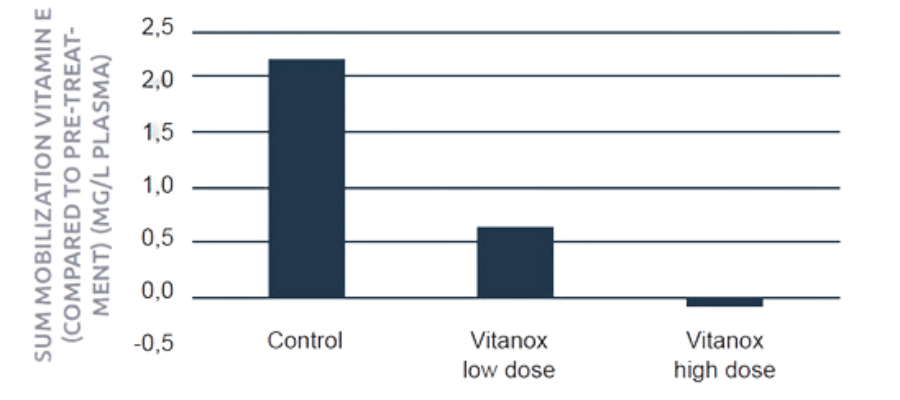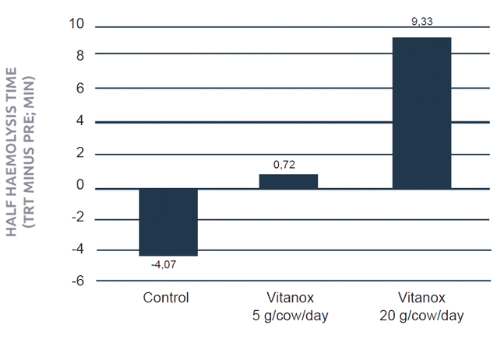High-productive dairy cows require a balanced diet to stay healthy and perform at their best. These cows often face stress at various stages of their lives, particularly in high-production environments. Stress triggers cellular metabolic processes, leading to oxidation and the production of harmful free radicals. If not managed properly, these free radicals can cause diseases, negatively impacting the health and welfare of dairy cows.
The role of free radicals and antioxidants
Free radicals, also known as reactive oxygen species (ROS), are harmful by-products of normal metabolic processes. These ROS can damage animal body cells by inducing oxidation of intracellular and extracellular molecules, affecting cell viability. In high-productive animals or during stressful periods, the body’s metabolic processes, including oxidation, increase, releasing high levels of free radicals. Vitamin E, in synergy with selenium, can break the radical chain reaction, protecting cellular membranes from peroxyl radicals.
Plant-based antioxidants as an alternative
Many plant-based ingredients possess powerful antioxidant properties. Plant polyphenols, a diverse group of over 8,000 compounds, offer a valuable dietary strategy to manage oxidative stress. Specific combinations of polyphenols can effectively supplement or replace Vitamin E.
Introducing Vitanox
Vitanox, an Agrimprove product developed with a specific combination of polyphenols, aims to partially replace Vitamin E in the diet. This increases the antioxidative capacity of dairy cows, improving their overall health and performance.
Benefits of plant polyphenols in dairy diets
At the independent research facility ILVO in Belgium, a study was conducted with 39 mid-lactation dairy cows. These cows were challenged with a diet low in Vitamin E and selenium for nine weeks. The study evaluated anti-oxidative and production parameters during a pre-treatment period (weeks 1 to 3) and a treatment period (weeks 4 to 9). Two groups received Vitanox at doses of 5g/c/d and 20g/c/d, while a control group received no Vitanox.

Results
- Vitamin E Mobilization: During the treatment period, cows receiving Vitanox required less Vitamin E mobilization compared to the pre-treatment period (Figure 1). This indicates that Vitanox, rich in polyphenols, can effectively fulfill the role of a biological antioxidant.
- Anti-Oxidative Defense: The Kit Radicaux Libres (KRL) test measured resistance against free radicals by assessing the half haemolysis time. Higher KRL values indicate better resistance. In the study, plasma KRL values were higher in cows receiving Vitanox compared to the control group, demonstrating Vitanox’s effectiveness in enhancing plasma antioxidant efficiency (Figure 2).

Performance under stressful conditions
During the experiment, all animals encountered a viral infection at the start of the treatment period. This situation allowed an assessment of Vitanox’s impact on performance parameters such as dry matter intake and milk yield during stress. Although not statistically significant, cows receiving Vitanox showed less severe reductions in feed intake and milk yield, indicating better coping mechanisms under stress.
Conclusion
The selected plant-based polyphenols in Vitanox help maintain the balance between oxidation and antioxidant capacity. Partially replacing Vitamin E with Vitanox offers a cost-efficient alternative, positively affecting animal health and productivity. Vitanox also shows promise in improving physiological parameters and performance of dairy cows in challenging situations. At Agrifirm, our goal is to promote the health and longevity of dairy cows, contributing to the sustainability of dairy production. Vitanox is a step towards achieving healthier, longer-living cows that enhance farm profitability and animal welfare.